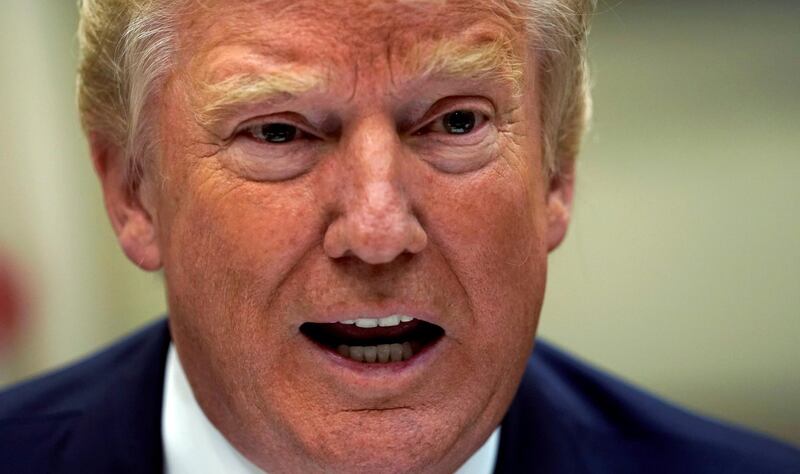Oil held near three-year highs on US Independence Day as tight supplies at home and abroad overshadow a Saudi pledge to boost output. President Donald Trump reacted with an angry tweet.
Opec is “doing little to help” reduce gasoline costs, Mr Trump tweeted. “If anything, they are driving prices higher as the United States defends many of their members for very little $’s. This must be a two way street. REDUCE PRICING NOW!"
The tweet came after the holiday’s oil trading had already ended in New York. Futures gained 0.3 per cent, extending crude’s 15 per cent rally since early June. Earlier, the Saudi and Russian energy ministers reiterated their 1 million-barrel-per-day output increase agreement reached last month in Vienna, following Mr Trump’s tweet over the weekend that he’d received assurances from the Middle Eastern nation that it could increase production by double that volume.
“Even if Saudi Arabia does provide much of the oil to replace any shortcomings from Iran or Libya or Venezuela, that has the market concerned that we will be hitting fairly low levels of spare capacity,’’ said Bart Melek, head of global commodity strategy at TD Securities in Toronto. “If anything happens in addition, it might be fairly difficult to supply the market.’’
Saudi Arabia said it would “use its spare capacity when needed to deal with any future changes in oil supply and demand rates, in coordination with other producing countries,” according to a report by the Saudi Press Agency.
Despite Trump’s ongoing campaign to encourage a more aggressive production increase, Morgan Stanley on Tuesday raised its Brent crude forecast to $85 per barrel next year.
“Bulls are regaining control,” said Tamas Varga, an analyst at PVM Oil Associates in London. “It looks as though any additional supply increase from Gulf producers and Russia will not be able to replace lost barrels from Libya, Iran and Venezuela.”
West Texas Intermediate crude for August delivery rose 19 cents to $74.33 per barrel when trading ceased around 1 p.m. on the New York Mercantile Exchange, holding near a three-year, intraday high of $75.27 on Tuesday. There was no settlement on Wednesday because of the holiday.
Brent for September gained 48 cents at $78.24 a barrel on the London-based ICE Futures Europe exchange, and traded at a $6.28 premium to WTI for the same month.
The American Petroleum Institute was said to report that US inventories dropped by 4.51 million barrels last week, and a Bloomberg survey also estimates a decline. Inventories in the key US storage hub of Cushing, Oklahoma, shrank by 2.6 million barrels, the API was said to report. If confirmed by government data Thursday, that would be the seventh consecutive drop. A Bloomberg survey forecast a 5 million-barrel slide in nationwide stocks.
On top of global supply disruptions, rising demand is also helping push up prices.
“Refineries are going strong, and we’ve continued to see pretty robust inventory declines, and that suggests that as we move forward, this market is going to be a little less supplied than we would think,’’ Mr Melek said.
Meanwhile in other oil-market news, state-owned Saudi Aramco said it will change its Asia crude-pricing benchmark by replacing Platts’ Oman assessment with the Dubai Mercantile Exchange’s Oman futures from October 1.
Separately Venezuela’s distressed oil industry may get some much-needed financing from China, receiving authorisation for a direct investment of more than $250 million from China Development Bank for its state-owned oil company to increase production.






